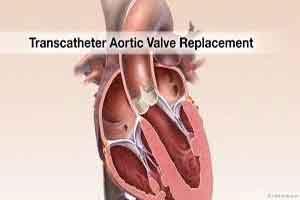- Home
- Editorial
- News
- Practice Guidelines
- Anesthesiology Guidelines
- Cancer Guidelines
- Cardiac Sciences Guidelines
- Critical Care Guidelines
- Dentistry Guidelines
- Dermatology Guidelines
- Diabetes and Endo Guidelines
- Diagnostics Guidelines
- ENT Guidelines
- Featured Practice Guidelines
- Gastroenterology Guidelines
- Geriatrics Guidelines
- Medicine Guidelines
- Nephrology Guidelines
- Neurosciences Guidelines
- Obs and Gynae Guidelines
- Ophthalmology Guidelines
- Orthopaedics Guidelines
- Paediatrics Guidelines
- Psychiatry Guidelines
- Pulmonology Guidelines
- Radiology Guidelines
- Surgery Guidelines
- Urology Guidelines
Patients developing AF after TAVR at highest risk of heart attack

Patients developing AFib after TAVR are at higher risk of death, stroke and heart attack compared to patients who already had AFib prior to the procedure, according to a study today in JACC: Cardiovascular Interventions. The paper is the first nationwide examination of patients who developed AFib for the first time following TAVR.
Transcatheter aortic valve replacement (TAVR) is a minimally invasive procedure to replace aortic valves by inserting a catheter into an artery in the leg to reach the patient's heart. Heart rhythm disorders, particularly atrial fibrillation (AFib), frequently complicate TAVR. Prior research has shown that if a patient has AFib before TAVR, they are much more likely to have worse outcomes after the procedure in comparison to patients who do not have pre-existing AFib. When it comes to patients who did not have AFib before TAVR but developed it after the procedure, data has been limited until now.
"We found that about 8 per cent of patients undergoing TAVR that did not have pre-existing AFib developed new-onset AFib after their procedure," said lead study author Amit N. Vora, MD, MPH, an interventional cardiologist and researcher from Duke University Medical Center and the Duke Clinical Research Institute. "When you combine patients that had AFib prior to the TAVR procedure and those that develop it after, more than one-half of all patients undergoing TAVR have to also deal with co-existing AFib."
The study looked at data from the STS/ACC TVT Registry, a collaboration of the Society of Thoracic Surgeons and the American College of Cardiology, linked with outcomes data from the Centers for Medicare and Medicaid Services. Researchers analyzed 13,356 patients undergoing TAVR at 381 sites across the U.S. From this group, 1,138 patients developed AFib for the first time after the procedure. The study focused on how often new AFib was occurring, how it was managed if it did happen, and what the outcomes were for patients who developed AFib after TAVR.
The analysis found that patients who developed new-onset AFib following TAVR were more likely to be female, older and have a severe chronic obstructive pulmonary disease. TAVR that was not performed via transfemoral access was also shown to be associated with the development of new-onset Afib.
The study also examined short- and long-term outcomes among patients who developed new-onset AFib. Rates of in-hospital death, stroke and heart attack were all higher among new-onset AFib patients. Additionally, these patients were at a 37 per cent higher risk of death one year after the TAVR procedure as well.
"Current guidelines are murky regarding the optimal treatment strategy for these patients, who often tend to be at high risk for stroke but also high risk for bleeding," Vora said. "Although there are a number of trials that are examining various strategies for this population, we need to continue to look very closely at this and determine the best care management for these high-risk patients.
For more detais click on the link: https://www.acc.org

Disclaimer: This site is primarily intended for healthcare professionals. Any content/information on this website does not replace the advice of medical and/or health professionals and should not be construed as medical/diagnostic advice/endorsement or prescription. Use of this site is subject to our terms of use, privacy policy, advertisement policy. © 2020 Minerva Medical Treatment Pvt Ltd